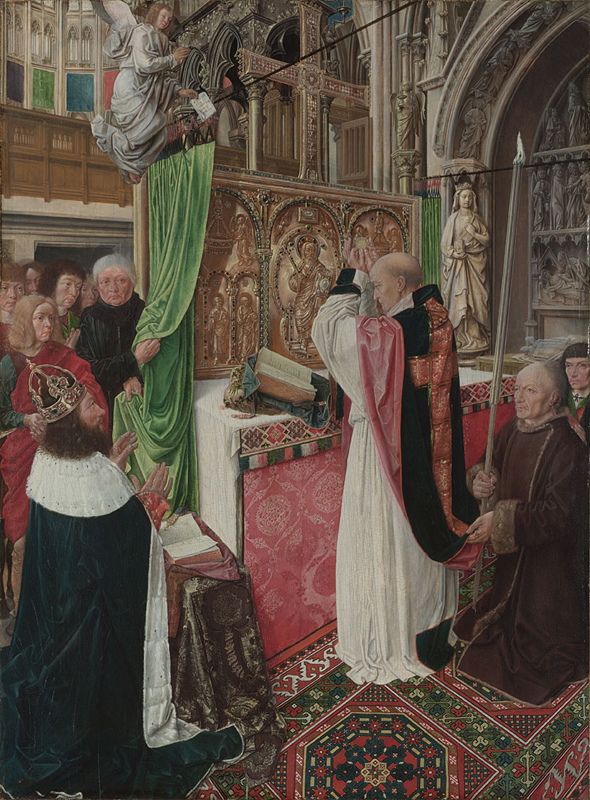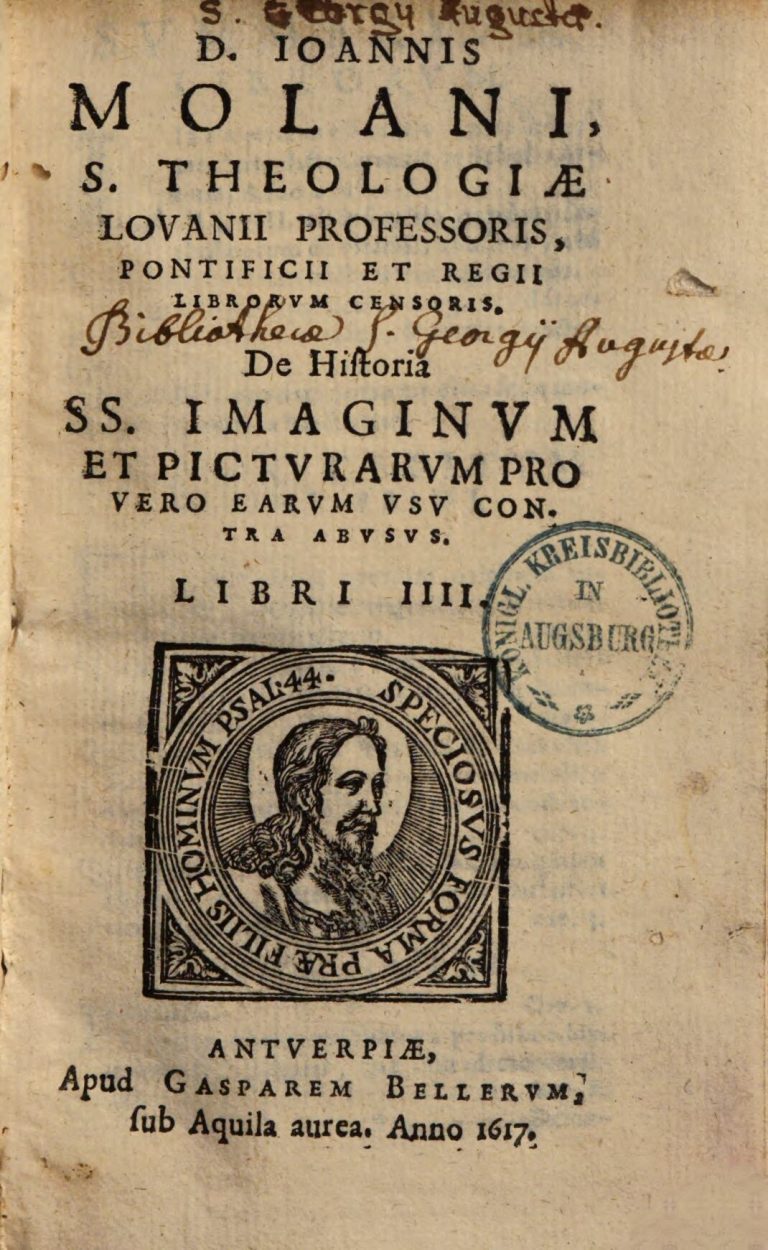
Photo © The National Gallery, London, https://www.nationalgallery.org.uk/paintings/NG4681
In book 2, chapter 23, Molanus deals with examples of images which could lead to dangerous errors among the uneducated. The sixth and last example of a wrong iconography Molanus provides in this chapter is the depiction of the story of Charles Martel, duke of Brabant, laying his hands on St. Giles. According to Molanus, the story would correspond to the story of the Mass of St. Giles, who would have asked an angel to remit the sin of the king of the Franks, from which it later was concluded that by invoking St. Giles one could ask forgiveness from the Lord for any committed sin, as long as one did not have the intention to repeat it. This is a dangerous image since it could give the uneducated a thought that goes against the teaching of the Church and the Holy Scriptures, therefore it is strongly condemned by Molanus.
“Finally, we can evoke Charles Martel, this illustrious duke of Brabant, grandfather of Emperor Charlemagne, represented with St. Giles laying his hands on him – that is to say giving him absolution, or even this other painting in which an angel announces to Charles that his sins are remitted to him with this verse: by the merit of Giles, I remit the sin of Charles. This painting seems to correspond to the history of St. Giles, in which an angel reveals to him that at his request a great crime which the king of the Franks had not dared to confess to anyone was remitted to him, provided he did not commit it again – Charles Martel was not, however, king of France, but only his protector and guardian; it was his son Pepin who received the title of king. In conclusion, it was added that if someone invoked St. Giles for any fault, provided he had the firm intention of not repeating it, he could be sure that the Lord would forgive him. Now, since this story is opposed to Sacred Scripture and to the tradition of the Church, which require sacramental absolution, it seems that the image which shows the story as I have just related it must be counted among those which give the uneducated a dangerous error.”
“Ac postremo quod Carolus Martellus magnus ille Brabantiae Dux, Caroli Magni Imperatoris avus, pingatur à sancto Aegidio manus impositionem sive avsolutionem accipiens: aut ut alia habet pictura, quod Angelus nunciet Carolo remissiionem peccati sui, adiecto carmine Aegidii merito Caroli peccata dimitto. Istud videtur respondere historiae sancti Aegidii. In qua habetur quod Angelo revelante ad preces S. Aegidii dimissum sit Regi Francorum (qui quidem non erat Rex Franciae, sed protector tantum et tutor, filius autem eius Pipinus regium nomen est consecutus) facinus magnum quod nulli ausus fuerit consiteri, si tamen deinceps ab illo desisteret. Adiunctumque fuisse in fine quod quisquis sanctum Aegidium pro quolibet commisso inuocaret, si ab illa perpetratione cessar, dimissum sibi proculdubio a Domino crederet. Sed cum historia hac in parte adversetur Scripturae sacrae et traditioni Ecclesiae, quae exigunt sacramentalem absolutionem, videtur etiam imago praedictam historiae narrationem exprimens referenda inter eas quae periculosi erroris occasionem rudibus praebent.

Molanus 1996, 188.



